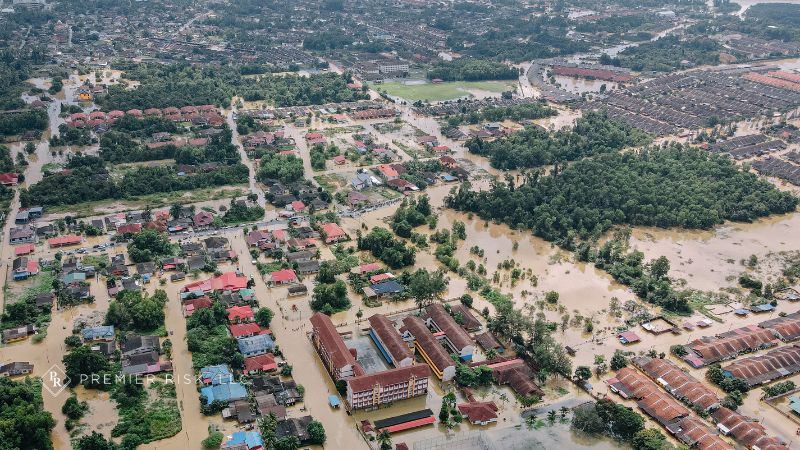Living near a beautiful water body can be a dream come true, offering stunning views and easy access to recreation. But these idyllic locations often come with a hidden risk: flooding. Floods can strike anywhere, anytime, causing devastating damage to homes and property. Let’s find answers to your 6 most pressing flood insurance questions.
- What Is Flood Insurance?
Flood insurance is a separate policy that protects your property against flood damage. Standard homeowners insurance excludes flood coverage, so a separate policy is crucial to ensure financial protection during a flood. This insurance helps cover the cost of repairs or rebuilding your home and damaged belongings up to the policy limit.
- How Many American Homeowners Have Flood Insurance?
According to Forbes, a shockingly low percentage of only 5%-15% of homeowners nationwide carry flood insurance. This statistic is particularly alarming considering that one in four homes will experience flood damage during a 30-year mortgage.
- Why Do People at Great Risk of Flooding Forgo Insurance?
There are several reasons why homeowners in flood-prone areas may skip flood insurance, such as:
- Misconception: Many people mistakenly believe that their homeowners policy covers floods.
- Cost Factor: Flood insurance premiums can vary depending on location and flood risk, but some may perceive the cost as unnecessary if they haven’t experienced flooding in the past.
- FEMA Flood Maps: Homeowners in areas designated as low-risk by FEMA flood maps might believe they’re not susceptible to flooding, even though even these areas can experience flood events.
- What Does Flood Insurance Cover?
Flood insurance generally covers two main areas:
- Building Coverage: This reimburses you for repairs or rebuilding of the structure of your home damaged by floodwaters. Coverage limits vary depending on the policy.
- Contents Coverage: This covers the value of your personal belongings damaged by flooding, such as furniture, appliances, and electronics. There are separate limits for contents coverage.
- Why Is the National Flood Insurance Program Underwater?
The NFIP, which provides most flood insurance in the US, faces financial challenges due to several factors, such as:
- Increased Flood Frequency and Severity: Climate change has led to more frequent and intense storms, resulting in higher payouts for flood claims.
- Underpriced Premiums: Historically, flood insurance premiums have not accurately reflected the true risk of floods, leading to a financial deficit for the program.
- Limited Participation: The low national flood insurance uptake means a smaller pool of policyholders to share the overall cost, making the program less financially stable.
- What Can Be Done to Fix the Program?
Efforts are underway to make flood insurance more accessible and financially sustainable, such as:
- Updating Flood Maps: Regular updates to FEMA flood maps ensure accurate risk assessments, which can lead to fairer pricing for flood insurance.
- Encouraging Participation: Raising awareness about flood risks and the importance of flood insurance can increase program participation and spread the cost burden.
- Adjusting Premiums: Flood insurance premiums may need to be adjusted to reflect the true risk of flooding in certain areas.
Stay Prepared Against Flooding with Our Comprehensive Insurance Solutions
Flooding can strike unexpectedly, leaving you financially devastated without proper insurance. Contact us at Premier Risk, LLC today for a free consultation. Our experienced agents can help you assess your flood risk, understand your insurance options, and find a policy that fits your needs and budget. Remember, a little preparation can go a long way in protecting your home and your financial future. Call us at 516-599-8484 for further assistance.










